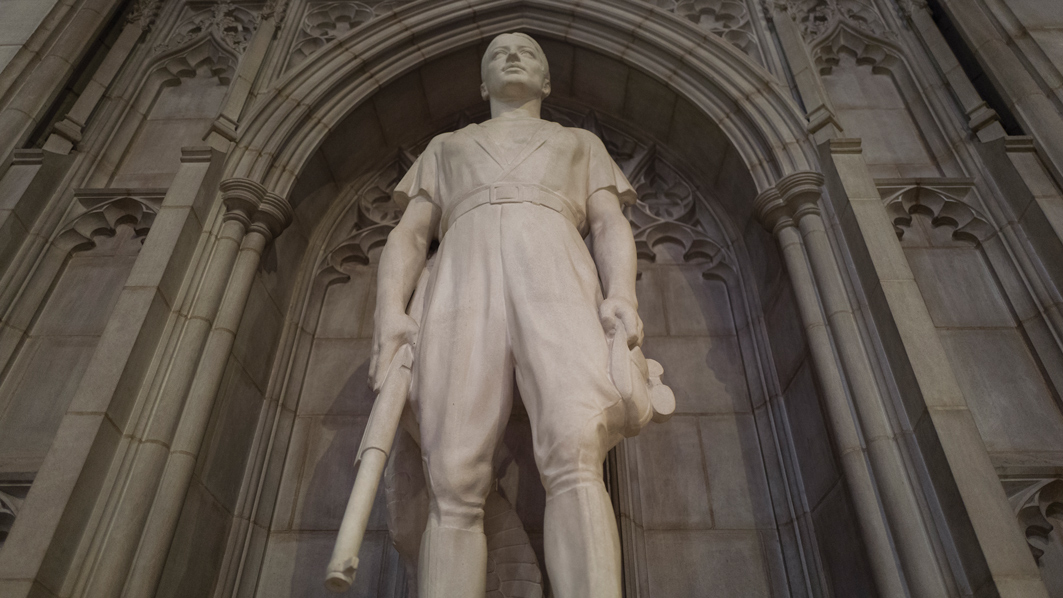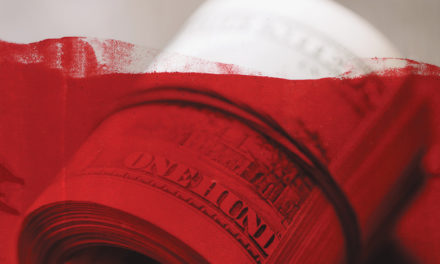Last August, San Francisco 49ers quarterback Colin Kaepernick touched off a firestorm of debate when he defended his decision to “take a knee” on the football field while the national anthem was playing. Kaepernick, who is biracial, and raised in a white family, said he was doing it to protest the way America treats black people. Within days, other NFL, high school, middle school, and even Pop Warner football players and other athletes followed suit—some out of solidarity with the sentiment, and some because they thought it was a cool trend.
The national anthem, which has been mostly free of partisan rancor since its first indissoluble link with sports was forged during the 1918 World Series, suddenly took on a political weight it was never intended to bear.
In another era, such fashionable dissent would have been unfathomable. Regardless of political party or ideology, the anthem was considered strictly a national song of unity, patriotism and appreciation of unsurpassed sacrifice in war and peace. To stand while singing the song—composed by Francis Scott Key during the Revolutionary War—has always been considered sacrosanct.
I thought of this jolting contrast recently when I read a Washington Post article about a beautiful statue in the National Cathedral in Washington, D.C.
History Lesson
In a city already overflowing with public monuments, this one is singular. It stands in a quiet crypt, a silent witness to patriotism and self-sacrifice. It’s the likeness of a now-forgotten hero of World War I, the American pilot Norman Prince, one of the founders of the Lafayette Escadrille.
Prince, a native New Englander and graduate of Harvard Law School, knew one of America’s greatest allies was under siege, and since the United States didn’t yet have an air corps, he volunteered with other young Americans to form a squadron to defend France against an aggressive enemy. Kaiser Wilhelm’s Germany had the most sophisticated and deadly air presence of any country in the world at the time.
Prince was just 29 years old and advancing in his law career. But he gave it all up to fight for freedom in the same revolutionary spirit in which Key had written the national anthem. Those were the values and standards Prince believed in, and he was willing to give his life on a lonely, forsaken battlefield to defend those principles.
Although America would eventually join the war in 1917—sacrificing more than 115,000 American lives to defend Europe’s freedom before the end of the war in 1918—the members of the Lafayette Escadrille felt it was their duty as American citizens to join the effort as early as possible to defend freedom where it was most hotly under assault. It was a decision that carried a near certainty of death.
The planes used in World War I were infamously unreliable. Parachutes were still a thing of the future. Of the original 38 members of the squadron, 10 lost their lives. During a much-deserved break from the war effort, to which he would eventually return to lose his life, Prince delivered a speech in Boston describing what it was like to serve in that “war that would end all wars.”
“The terrible racket and the spectacle of shells … exploding nearby made me shiver,” Prince said. “My limbs began to tremble … My legs were so wobbly … that I tried to hide them from my observer; who was an old hand at the game. I confess to a feeling of relief when we reached the point where our bombs were to be thrown over.”
Coming Home
Prince died in October 1916. During the three days he spent in a coma after his plane crashed, the French government bestowed upon him one of its highest medals for valor, the French Legion of Honor. When his funeral took place, planes dropped flowers from the sky in his honor over the battlefields of France.
Prince was buried in a cathedral there for 20 years, until his still-grieving parents decided to honor him and his legacy by constructing a beautiful new chapel at the Washington National Cathedral, interring him beneath an exquisite statue.
Prince’s flag-draped coffin left France on the SS Normandie, arrived in New York City in December 1937, and was placed on a train to Washington’s magnificent Union Station near Capitol Hill. From there, it was taken to the National Cathedral by way of a horse-drawn cortege while U.S. Army airplanes flew overhead.
There was no one taking a knee that day in Washington, D.C.—unless they were thanking God for this unsung American flyer and thousands like him who paid the ultimate price for freedom and peace in a foreign land. The nuances were a combination of religious devotion and patriotic duty—the height of good citizenship.
A famous French sculptor, Paul Landowski, was commissioned to create the statue honoring Prince. Landowski—best known for the famous “Christ the Redeemer” statue in Rio de Janeiro—created a work of art that’s a glory to behold, commemorating in white marble a young American of faith who stands for all eternity above an eagle and inside a house of worship in the world’s most powerful city. The statue’s utter simplicity gives it power and depth: A young American looking outward and upward to something larger and more profound than himself. It is a statue of duty and immortality that evokes humility, grace and a code of personal honor worthy of a Christian gentleman.
To commemorate Prince’s sacrifice for liberty, the man who led American forces in World War I, General John J. “Blackjack” Pershing, accepted an invitation to speak during the statue’s dedication service. His remarks, which encompass a mix of righteousness, benevolence and harmony, must have been deeply moving to the worshippers who were gathered there.
No one in the cathedral that day confused love of country with the Gospel of Jesus Christ—yet the ceremony revealed that good citizenship often flows from faith in God and a unique kind of valorous fortitude which powers the beauty of America’s national anthem.
That’s what the national anthem is about. And that is what we honor when we stand.
Originally published in the January 2017 issue of Citizen magazine.






